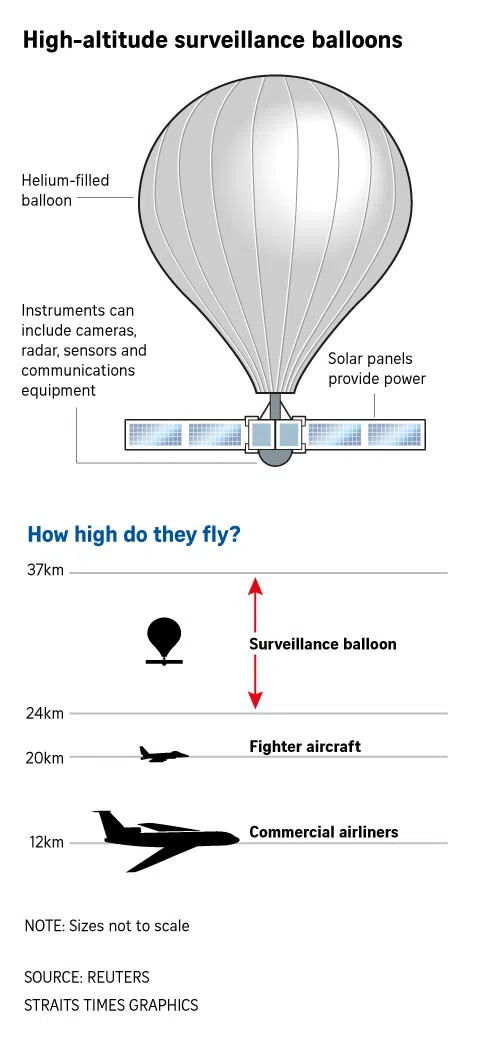Chinese ‘spy’ balloon may be guided by advanced AI technology, says expert
Sign up now: Get ST's newsletters delivered to your inbox

The Pentagon said the balloon was now heading eastwards over the central United States, adding it was not being shot down for safety reasons.
PHOTO: REUTERS
Follow topic:
WASHINGTON - The Chinese surveillance balloon
The Pentagon said the balloon was now heading eastwards over the central United States, adding it was not being shot down for safety reasons. The balloon was last spotted over Missouri and expected to reach America’s east coast near the Carolinas this weekend before passing out to the sea in the south-east, according to the BBC and CNN.
A second Chinese surveillance balloon was spotted over Latin America, scrapping of a rare trip to Beijing by US Secretary of State Antony Blinken.
Mr William Kim, a specialist in surveillance balloons at the Marathon Initiative think-tank in Washington, told AFP on Friday that balloons are a valuable means of observation that are difficult to shoot down.
Mr Kim said the first Chinese balloon looks like a normal weather balloon but with distinct characteristics. It has a quite large, visible “payload” – the electronics for guidance and collecting information, powered by solar panels.
And it appears to have advanced steering technologies that the US military has not yet put in the air.
AI has made it possible for a balloon, just by reading the changes in the air around it, to adjust its altitude to guide it to where it wants to go, Mr Kim said.
“What’s happened very recently with advances in AI is that you can have a balloon that... doesn’t need its own motion system. Merely by adjusting the altitude, it can control its direction.”
That could also involve radio communications from its home base, he said. But “if the point of it is to monitor (intercontinental ballistic missile) silos, which is one of the theories... you wouldn’t necessarily need to tell it to adjust its location”, he added.
Moments before Mr Blinken’s decision to cancel his trip – aimed at easing tensions between the two countries – China issued a rare statement of regret over the first balloon and blamed winds for pushing what it called a civilian airship into US airspace.
But President Joe Biden’s administration described it as a manoeuvrable “surveillance balloon”.

Mr Kim said that as satellites become more vulnerable to being attacked from the earth and space, balloons have distinct advantages.
They do not easily show up on radar. “These are materials that don’t reflect, they’re not metal. So even though these balloons expand to quite large, detecting... the balloon itself is going to be a problem,” he said.
And the payload, if small enough, can be overlooked.
Balloons also have the advantage of holding relatively stationary positions over a surveillance target, compared with constantly orbiting satellites used by spy agencies to take photographs.
“These things can stay overhead, they can stay over one spot months at a time, compared to the low-earth-orbit satellites,” Mr Kim said. There is a “real possibility” that a Chinese balloon may have been intended to collect data from outside US boundaries but malfunctioned, said Mr Kim.
“These balloons don’t always work perfectly,” he added. AFP

